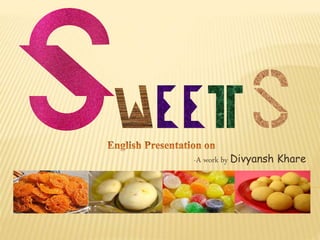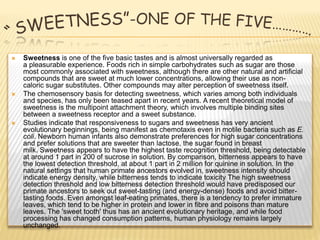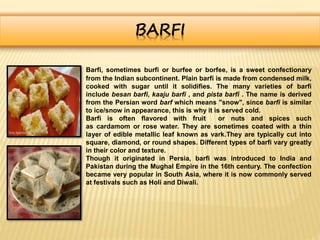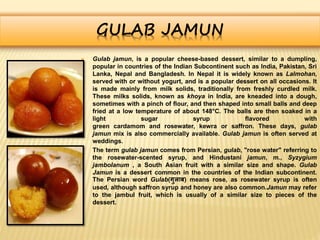This document provides information about several traditional South Asian sweets through short descriptions of each one. It discusses sweets such as Anarsa (a pastry-like snack associated with Diwali), Barfi (a milk-based confection), Chikki (a peanut brittle-like sweet), Gulab Jamun (cheese balls in rose-flavored syrup), Jalebi (pretzel-shaped sweets soaked in sugar syrup), Kulfi (a frozen dairy dessert), Khaja (a sweet made from wheat flour and sugar), Kheer (a rice pudding), Laddu (ball-shaped sweets made with flour and sugar), Malapua (an Indian pancake dessert),
















